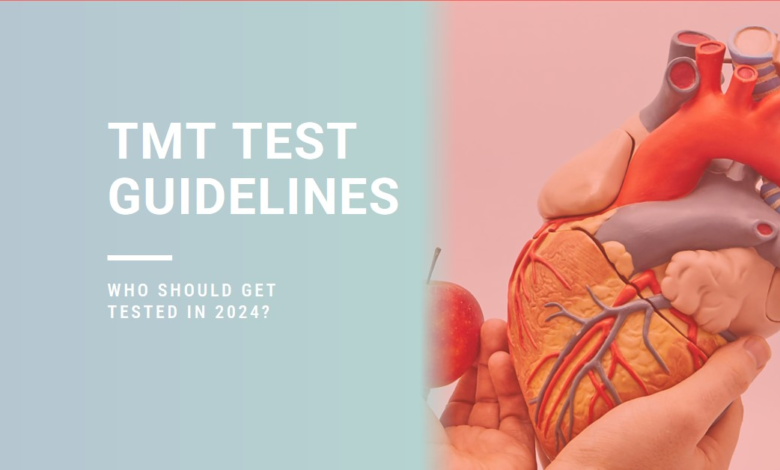Who Should Get a TMT Test in 2024? Latest Guidelines & FAQs

In the fast-paced world we live in, maintaining heart health has become more crucial than ever. One essential tool in the assessment of cardiovascular health is the Treadmill Test (TMT), also known as the Exercise Stress Test. This diagnostic test plays a significant role in detecting coronary artery disease (CAD) and other heart-related issues. In this article, we’ll delve into who should consider getting a TMT test in 2024, the latest guidelines for the procedure, and what patients can expect during the test. Additionally, we’ll highlight how Ecotown Diagnostics in Bangalore can assist with this critical test.
Understanding the TMT Test
The TMT test measures the heart’s ability to respond to external stress in a controlled clinical environment. During the test, the patient exercises on a treadmill while their heart rate, blood pressure, and electrocardiogram (ECG) are continuously monitored. The primary aim is to identify any abnormal heart rhythms or blood flow issues that may not be apparent at rest.
Who Should Consider Getting a TMT Test in 2024?
1. Individuals with Symptoms of Heart Disease
Anyone experiencing symptoms such as chest pain, shortness of breath, or unexplained fatigue should consider a TMT test. These symptoms can be indicative of underlying heart conditions that may require immediate attention.
2. Individuals with Risk Factors for Heart Disease
Those with risk factors for heart disease, such as high blood pressure, high cholesterol, diabetes, obesity, or a family history of heart disease, should consider undergoing a TMT test. Early detection through stress testing can significantly improve the management and outcome of heart disease.
3. Post-Heart Attack or Post-Heart Surgery Patients
Patients who have recently suffered a heart attack or undergone heart surgery are often advised to take a TMT test. This helps in assessing the effectiveness of the treatment and the heart’s recovery process.
4. Individuals Engaging in Strenuous Physical Activity
People planning to engage in strenuous physical activities, including athletes and fitness enthusiasts, should consider a TMT test. This ensures that their heart can handle increased physical demands without adverse effects.
5. Middle-Aged and Older Adults
As age is a significant risk factor for heart disease, middle-aged and older adults should consider regular TMT testing, especially if they lead a sedentary lifestyle or have other risk factors.
Latest Guidelines for TMT Test in 2024
The guidelines for conducting a TMT test have evolved over the years to ensure safety, accuracy, and better diagnostic outcomes. Here are the latest recommendations:
1. Pre-Test Assessment
Before conducting the TMT test, a thorough pre-test assessment is crucial. This includes reviewing the patient’s medical history, conducting a physical examination, and ensuring that the patient understands the procedure and its risks.
2. Informed Consent
Obtaining informed consent is essential. Patients should be aware of the purpose of the test, the potential risks involved, and the expected outcomes. This ensures that patients make an informed decision about undergoing the test.
3. Standardized Protocols
Using standardized protocols for the TMT test is vital for consistency and accuracy. The Bruce Protocol remains the most widely used, which involves increasing treadmill speed and incline at set intervals. However, other protocols may be used based on the patient’s condition and physical capabilities.
4. Continuous Monitoring
During the TMT test, continuous monitoring of the patient’s heart rate, blood pressure, and ECG is mandatory. This helps in early detection of any abnormalities that may arise during the test, ensuring patient safety.
5. Post-Test Care
After the test, patients should be monitored until their vital signs return to baseline. Any significant findings should be promptly communicated to the patient, and appropriate follow-up actions should be taken.
What to Expect During a TMT Test
Understanding what happens during a TMT test can help alleviate patient anxiety and ensure better cooperation. Here’s a step-by-step overview:
1. Preparation
Before starting the test, electrodes are placed on the patient’s chest to monitor the heart’s electrical activity. Blood pressure cuffs are also placed to measure blood pressure at regular intervals.
2. Warm-Up
The test begins with a warm-up phase, where the patient walks on the treadmill at a slow pace. This helps in adjusting to the treadmill and serves as a baseline for heart rate and ECG readings.
3. Increasing Intensity
The treadmill’s speed and incline are gradually increased every few minutes. The patient is encouraged to exercise to the best of their ability, with the goal of reaching a target heart rate.
4. Monitoring
Throughout the test, the healthcare provider closely monitors the patient’s heart rate, blood pressure, and ECG. If any abnormal signs are detected, the test may be stopped immediately.
5. Cool-Down
After reaching the target heart rate or if the patient experiences any symptoms, the treadmill is slowed down, allowing for a cool-down period. The patient is monitored until their vital signs return to normal.
Ecotown Diagnostics: Your Partner in Heart Health
For those in Bangalore, Ecotown Diagnostics offers state-of-the-art facilities and experienced professionals to conduct TMT tests. With a commitment to patient care and accurate diagnostics, Ecotown Diagnostics ensures that each patient receives comprehensive evaluation and personalized care. Their team of experts is dedicated to providing a comfortable and safe environment for all diagnostic procedures.
FAQs
1. Is the TMT test safe?
Yes, the TMT test is generally safe when conducted under professional supervision. Continuous monitoring ensures any adverse reactions are promptly addressed.
2. How long does the TMT test take?
The entire procedure, including preparation and post-test monitoring, typically takes about 30 to 45 minutes.
3. Can I eat before a TMT test?
It is usually recommended to avoid eating a heavy meal for at least 2-3 hours before the test. However, specific instructions may vary, so it’s best to follow your healthcare provider’s advice.
4. What should I wear for a TMT test?
Wear comfortable clothing and suitable footwear for walking or running on the treadmill.
5. How often should I get a TMT test?
The frequency of TMT testing depends on individual risk factors and your healthcare provider’s recommendations. Generally, those at higher risk or with previous heart issues may need more frequent testing.
Conclusion
The TMT test is a vital tool in the early detection and management of heart disease. By understanding who should consider the test and following the latest guidelines, patients can take proactive steps towards maintaining heart health. Ecotown Diagnostics in Bangalore stands ready to assist with comprehensive and accurate TMT testing, ensuring your heart receives the care it deserves.
Are you ready to take the next step in ensuring your heart health?
Also know Prepare for a Treadmill Test: Expert Tips for Accurate Results.



